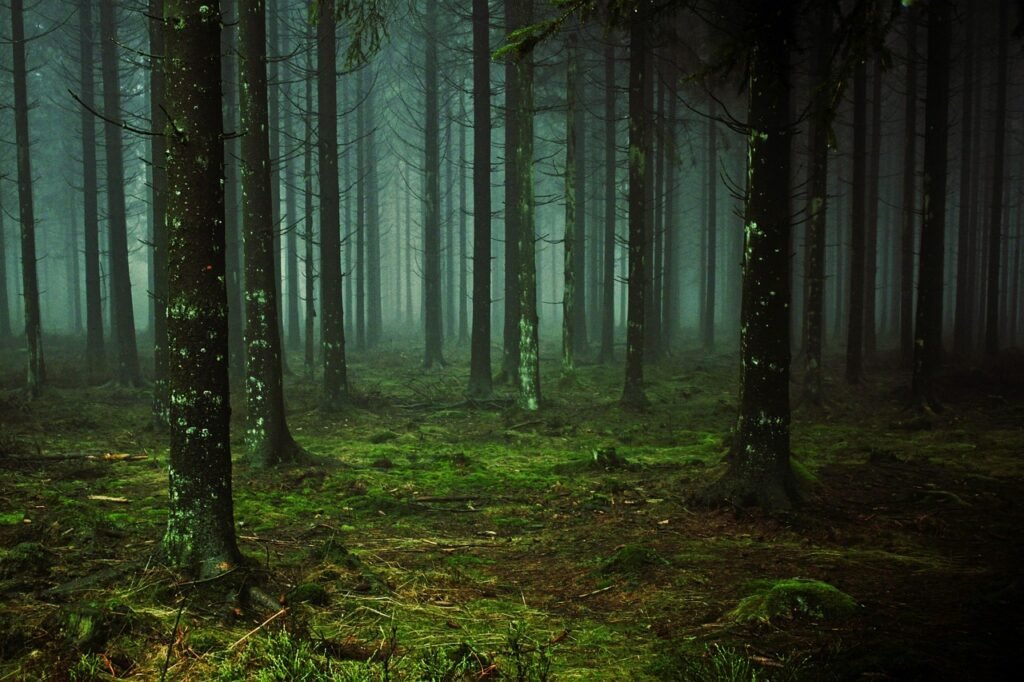Welcome to this article that will answer the age-old question, “Are the Smoky Mountains always foggy?” Despite their name, the Smoky Mountains are not always shrouded in fog. While fog is a common occurrence due to the region’s unique climate, there are plenty of clear, sunny days to enjoy the stunning views and vibrant foliage of this iconic mountain range. Learn more about the weather patterns of the Smoky Mountains and discover the best times to visit for optimal visibility and breathtaking scenery. Are the Smoky Mountains Always Foggy?
Have you ever wondered if the stunning Smoky Mountains are always shrouded in fog? The answer might surprise you. Let’s delve into the unique weather patterns of this iconic mountain range and discover the truth behind the famous “smoke” that gives these mountains their name.
The Origin of the Name
The Smoky Mountains received their name due to the natural fog that often envelops the peaks and valleys. This fog, or smoke, is caused by a combination of factors that create a mystical and enchanting atmosphere. But is this fog present year-round, or are there times when the mountains are clear and crisp?
Exploring the Weather Patterns
The Smoky Mountains are located in a region with diverse weather patterns that can vary throughout the year. The mountains themselves play a significant role in creating these unique weather conditions. The elevation of the peaks, which can reach over 6,000 feet, contributes to the formation of clouds and fog that can blanket the area.
Seasons in the Smokies
Each season in the Smoky Mountains brings its own weather patterns and atmospheric conditions. From the snowy winters to the lush greenery of spring and summer, the mountains experience a range of weather events that can impact visibility and fog levels.
Average Conditions
On average, the Smoky Mountains experience foggy or cloudy conditions on roughly 35% of days throughout the year. This means that the majority of days in the Smokies are clear and sunny, providing ample opportunities to explore the stunning landscape without the hindrance of fog.

This image is property of pixabay.com.
Causes of Fogginess
While the Smoky Mountains may not always be shrouded in fog, there are specific reasons why this atmospheric phenomenon occurs in the region. Understanding these causes can shed light on why the mountains can appear misty and ethereal at times.
Moisture from the Gulf of Mexico
One of the primary reasons for the fog in the Smoky Mountains is the moisture that flows into the region from the Gulf of Mexico. This moisture-laden air can collide with cooler temperatures in the mountains, leading to the formation of clouds and fog that create the iconic smoky appearance.
Temperature Inversions
Temperature inversions, where warmer air traps cooler air near the ground, can also contribute to foggy conditions in the Smoky Mountains. This phenomenon can occur more frequently in the mountains due to the varying elevations and topography that create pockets of trapped air and moisture.
Valley Fog
Valley fog is a common occurrence in the Smoky Mountains, where cool air sinks into the valleys and becomes trapped by the surrounding peaks. This can lead to thick fog that drifts through the valleys and obscures visibility, creating a breathtaking and mysterious landscape.

This image is property of pixabay.com.
Factors Affecting Visibility
While fog is a natural and beautiful aspect of the Smoky Mountains, it can also impact visibility and outdoor activities in the region. Understanding the factors that influence visibility can help you plan your adventures in the mountains and make the most of your time exploring this stunning landscape.
Time of Day
The time of day can significantly affect visibility in the Smoky Mountains. Early mornings and evenings are more prone to fog and mist due to temperature fluctuations and moisture levels. Planning your excursions during midday when the sun is highest in the sky can increase your chances of clear skies and breathtaking views.
Weather Fronts
Weather fronts moving through the region can also impact visibility and fog levels in the Smoky Mountains. Cold fronts can bring in moisture and cool air, creating foggy conditions, while warm fronts may dispel the fog and provide clear skies. Keeping an eye on the weather forecast can help you prepare for varying visibility levels during your visit.
Altitude and Elevation
The altitude and elevation of the Smoky Mountains can play a significant role in visibility and fog levels. Higher elevations are more prone to clouds and fog, while lower elevations may experience clearer skies. Planning your activities based on the elevation of the trails and overlooks can help you maximize your chances of enjoying clear views and stunning vistas.

This image is property of pixabay.com.
Tips for Enjoying the Smoky Mountains
Whether you’re a seasoned hiker or a first-time visitor, there are plenty of ways to enjoy the beauty of the Smoky Mountains, regardless of the weather conditions. Here are some tips to help you make the most of your time in this enchanting mountain range.
Check the Weather Forecast
Before heading out for a day of hiking or sightseeing, be sure to check the weather forecast for the Smoky Mountains. This can help you prepare for any fog or inclement weather and adjust your plans accordingly. Packing layers and rain gear can ensure you’re ready for whatever Mother Nature throws your way.
Explore Early or Late
If you’re hoping to catch a glimpse of the iconic fog in the Smoky Mountains, consider exploring the area early in the morning or late in the evening. These times of day are more likely to offer misty conditions that add a touch of magic to your adventures. Be sure to bring a camera to capture the ethereal beauty of the fog-covered peaks and valleys.
Visit Different Seasons
The Smoky Mountains offer a diverse range of experiences throughout the year, with each season bringing its unique sights and sounds. From the vibrant fall foliage to the snow-capped peaks of winter, exploring the mountains in different seasons can provide a fresh perspective on this stunning landscape. Consider planning multiple trips throughout the year to witness the changing beauty of the Smokies.

In Conclusion
While the Smoky Mountains may not always be shrouded in fog, the misty conditions that give this range its name are a beloved and captivating aspect of the landscape. By understanding the weather patterns, causes of fogginess, and tips for enjoying the mountains, you can make the most of your visit to this enchanting destination. Whether you’re an outdoor enthusiast, nature lover, or simply seeking a peaceful retreat, the Smoky Mountains offer endless opportunities for exploration and discovery. Embrace the magic of the mist, and let the beauty of this iconic mountain range take your breath away.


